It’s often said that knowledge is power, and when it comes to identifying depression glass patterns, this rings true. Knowing the various types of depression glass can help you identify a pattern and determine whether or not it’s authentic.
By analyzing the pattern, inspecting the edges and rim, checking for stampings, and researching the manufacturer, you can equip yourself with the tools needed to make an informed decision.
In this article, we’ll explore each of these steps in detail so you can confidently identify depression glass patterns.
Key Takeaways
- Identifying depression glass patterns requires knowledge of shapes, textures, color combinations, and age indicators.
- Analyzing patterns involves exploring colorations, comparing designs, considering historical context, inspecting edges and rims, and assessing functionality.
- Checking for stampings on the glass can help identify the manufacturer and provide valuable information for research.
- Researching the manufacturer, including checking for marks or stamps, looking up catalogs, and comparing styles, can help determine the uniqueness and value of the piece.
Understand the Different Types of Depression Glass
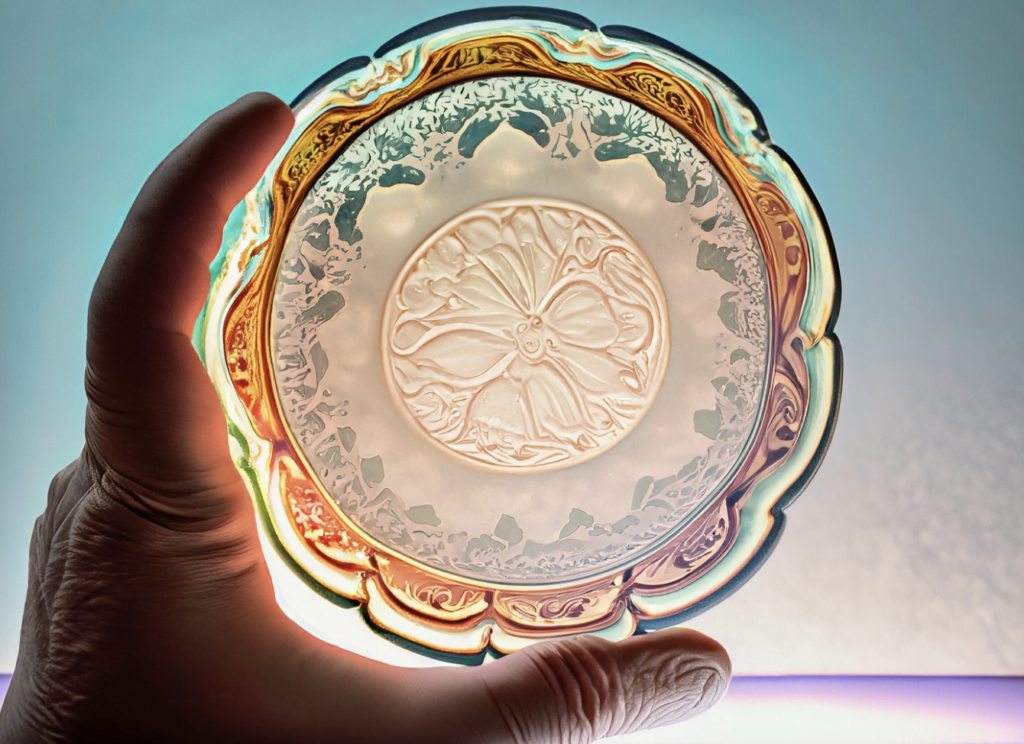
You can easily identify the different types of depression glass by their distinct patterns and colors! Collecting tips to help you identify styles include:
- Looking for a range of shapes, textures, and color combinations.
- Knowing the pattern name is the best way to determine its value.
- Looking for signs of age such as scratches or bubbles in the glass.
- Paying attention to detail when examining pieces and comparing them to similar items in order to distinguish subtle differences.
As you gain more experience with identifying these beautiful pieces, you’ll be able to better analyze the pattern and spot valuable finds that others may miss!
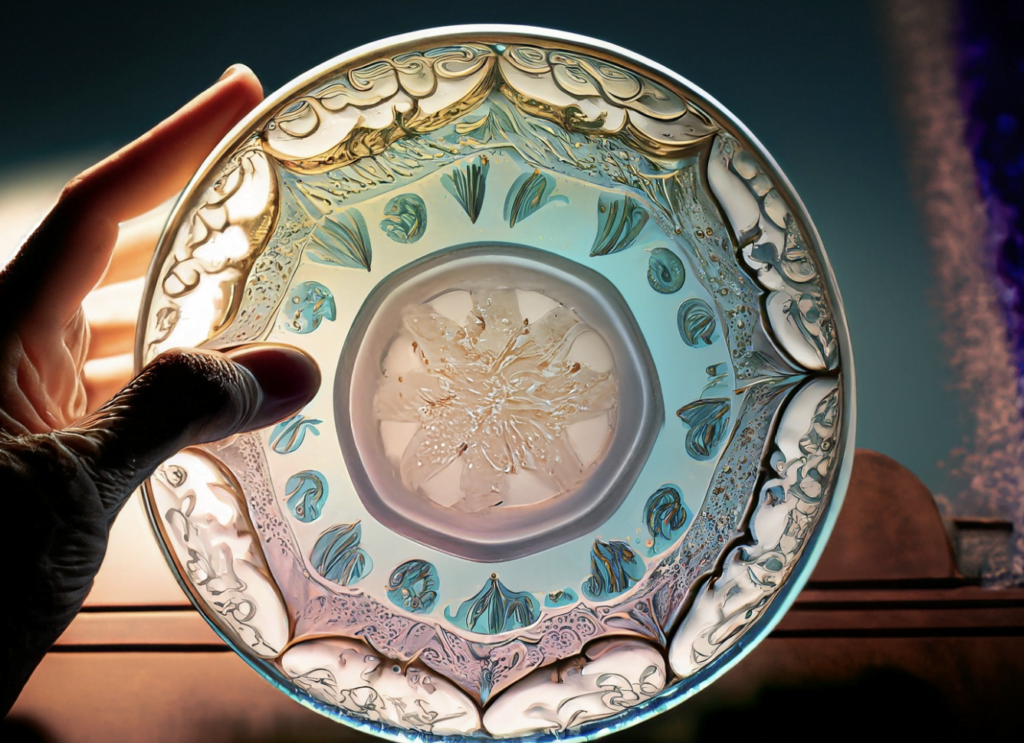
Analyze the Pattern
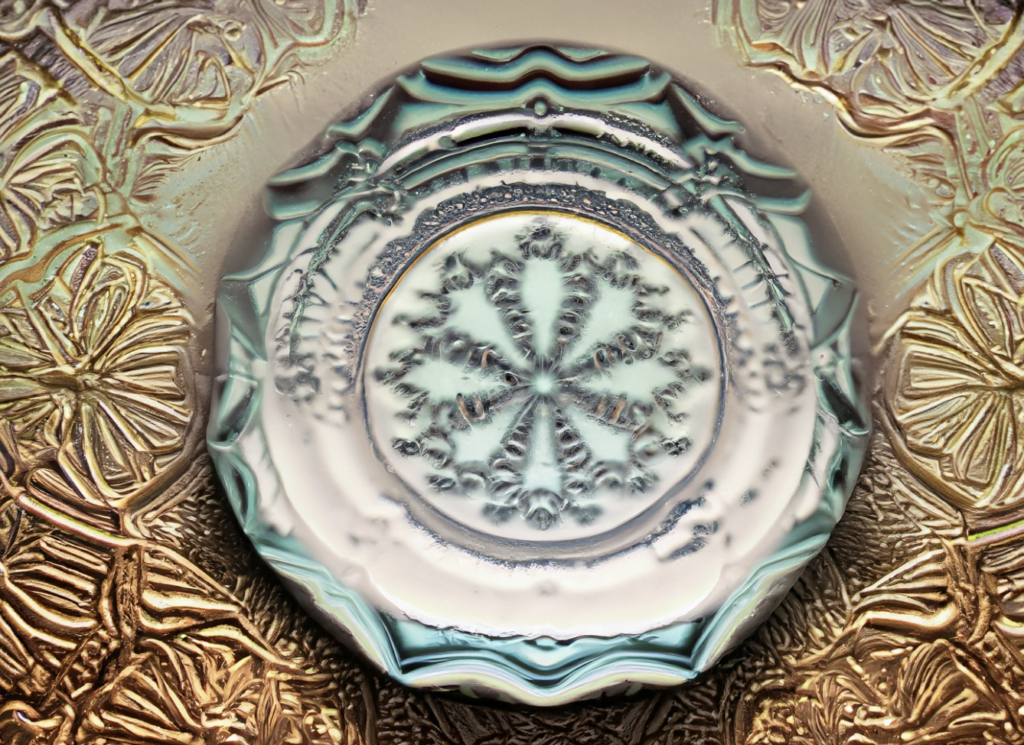
Analyzing the design can help you uncover hidden stories and emotional connections.
Explore colorations of the glass, compare designs to identify patterns unique to each piece.
Look for repetitions in shapes, sizes, colors, and motifs that can reveal a manufacturer’s signature style.
Consider any relevant historical context or symbolism associated with the pattern.
Inspect the edges and rim for signs of wear or damage from years of use; this could indicate its age and origin.
In addition to aesthetics, assessing functionality will show if it was crafted for practicality or decoration.
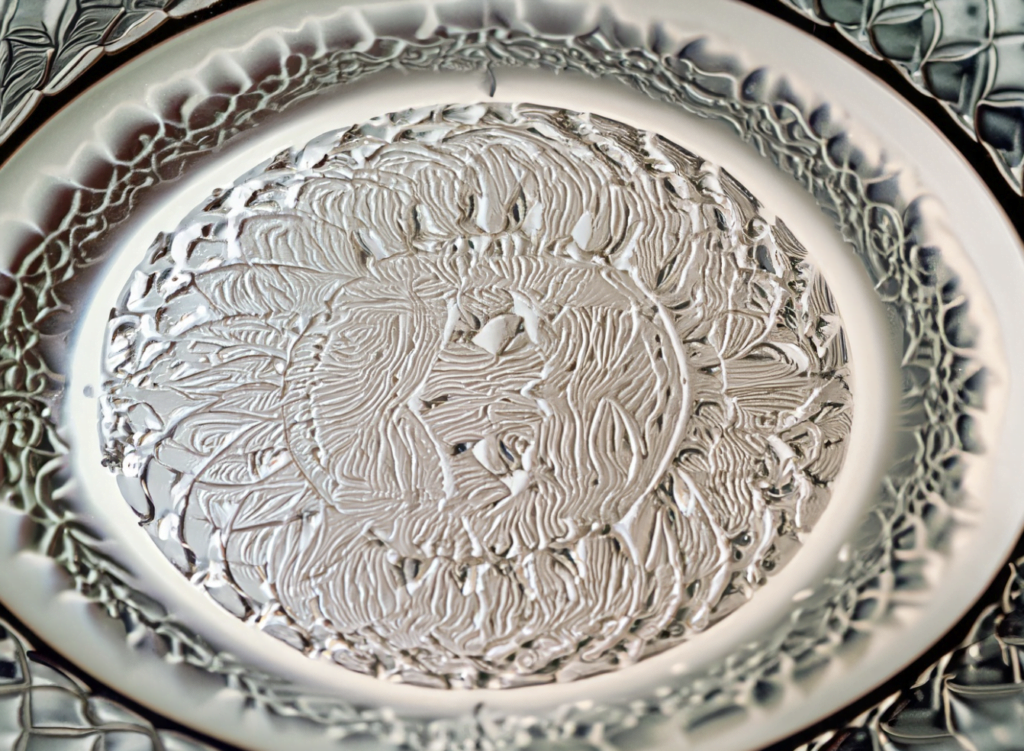
With an eye towards detail, you’ll gain insight into the story behind each piece of depression glass.
Inspect the Edges and Rim
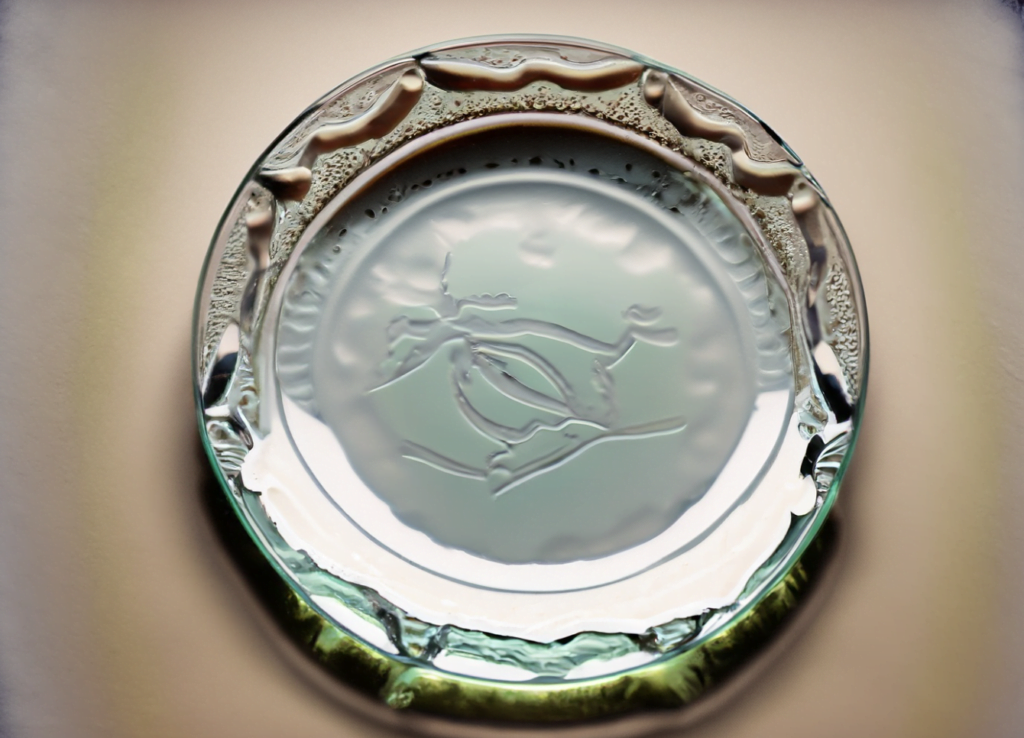
Inspecting the edges and rim of depression glass is crucial in determining its age and origin. Colors that are indicative of a particular era, such as bright pink from the 1930s, should be looked for.
Carefully checking for flaws or chips around the edges can indicate wear. To identify similarities or differences in coloration or shape, compare pieces. Hold each piece up to the light and look for any stampings on the underside of the rim.

If there is no marking, it could still be depression glass, but identifying it without an experienced eye or reference materials will be challenging. However, with careful inspection, you can often narrow down which pattern your piece belongs to and when it was made – a great first step towards identifying depression glass.
Check for Stampings

When examining the piece, hold it up to the light and check for any stampings on the underside of the rim. These stampings can provide valuable information for identification purposes.
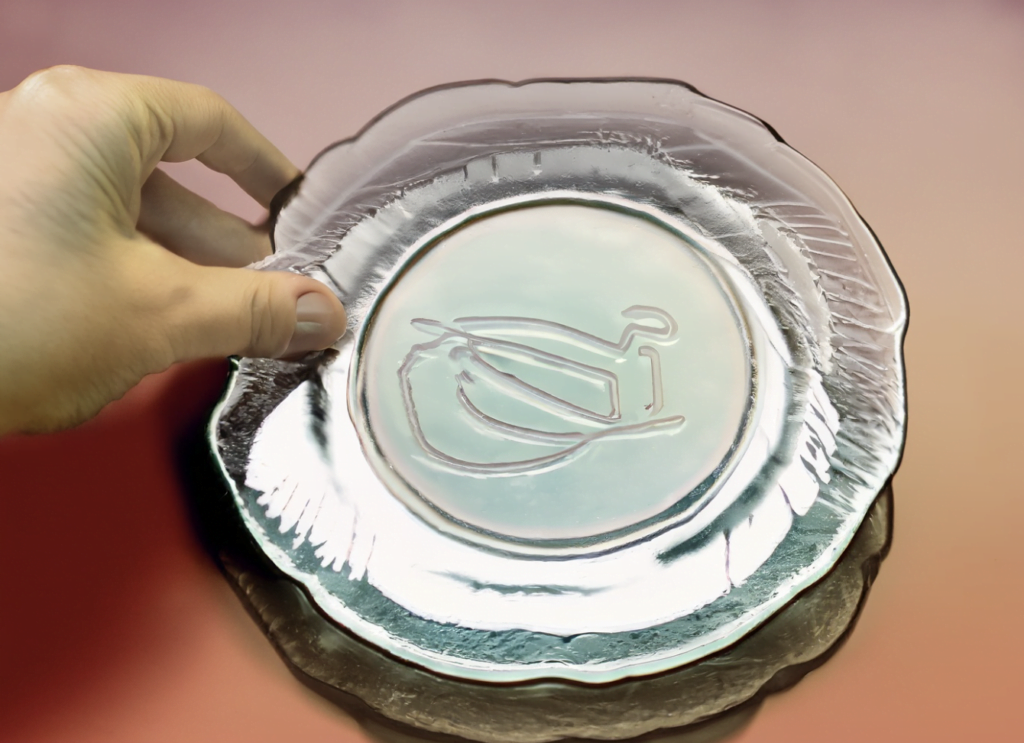
Look for markings such as maker’s logos or names to identify patterns and compare brands. If there is a logo, use it to research the manufacturer of the glassware. Manufacturers may have unique symbols associated with their name or pattern.

Alternatively, you may find a number that can be used to look up general information about when and where it was made. Make sure to record any markings found on the piece for future reference during research. Armed with this information, you can now proceed to search for more clues about your depression glass pattern and move one step closer to identifying it!

Research the Manufacturer

By researching the maker, you can uncover more about this mysterious item and its origins. Examining the construction of depression glass patterns can help identify makers and their specific styles. Here are a few ways to research:

- Check for mark or stamps on the back or bottom of the piece which indicate manufacturer or country of origin.
- Look up catalogs from antique shops that show similar patterns with known manufacturers.
- Compare styles to determine if the pattern is unique or closely related to other patterns.
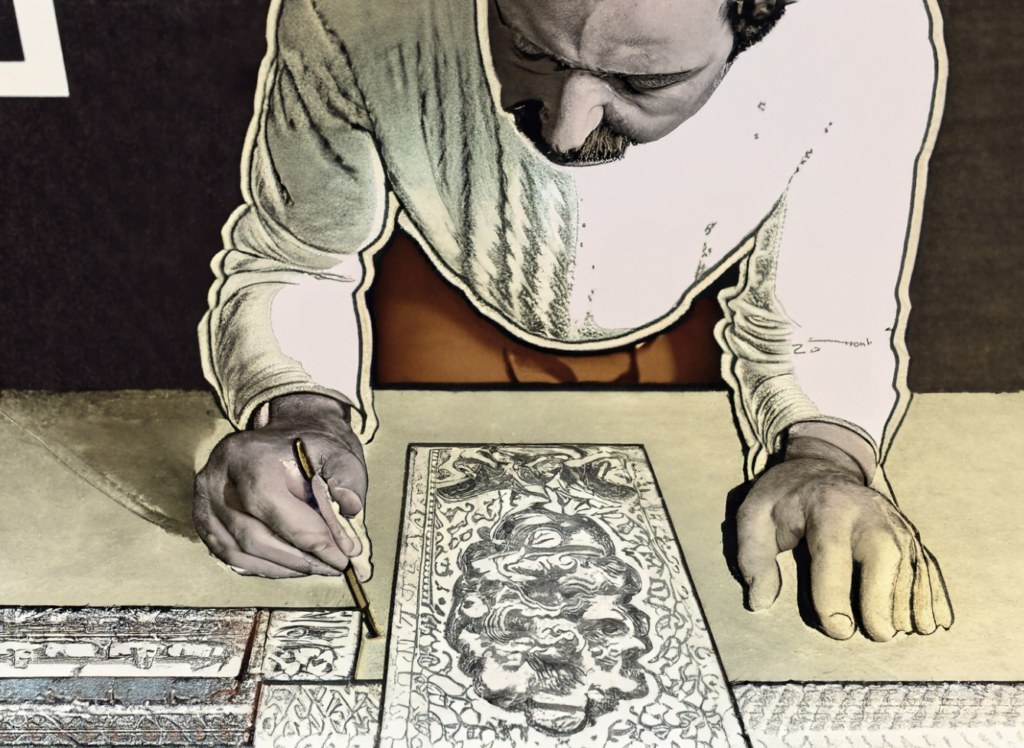
Doing your own research can help you gain an understanding on how to identify various makers and their signature styles, allowing you to confidently appreciate your piece’s true value.
Frequently Asked Questions
What is the best way to clean and store depression glass?
To best clean and store depression glass, use gentle polishing techniques to preserve its beauty. Find an appropriate storage solution; a soft cloth in a dry place is ideal to protect from dust and scratches. Serve others by carefully handling the piece with care.
How much is depression glass worth?
Collecting tips and pricing guides can help you determine the worth of depression glass. Consider auction results, condition, rarity, and popularity when assessing value. Research and find reputable sources for accurate estimates of your pieces.
Are there any safety concerns with using depression glass?
You may have heard of collecting depression glass, but did you know it can also affect your mental health? Make sure to follow safety tips for collectors to ensure a positive experience. Consider researching collecting tips and the potential risks associated with using depression glass.
Are there any online resources to help identify depression glass patterns?
Yes, there are several excellent online resources for identifying depression glass patterns. Look for sites that discuss repairing chips and identifying marks to help you narrow down your search. With the right information, you can confidently identify any pattern with ease.
Is it possible to find replacement pieces for a complete depression glass set?
Yes, it is possible to find replacement pieces for a complete depression glass set. With its decorative value and historical context, the availability of these items can be significant. We are here to assist you in finding the perfect piece for your collection.
Conclusion
You’ve now learned the basics for identifying depression glass patterns. With some practice, you can become a pro! Remember to:
- Check for stampings
- Inspect edges and rims
- Analyze the pattern
- Understand different types of depression glass
By following these steps, you’ll soon be able to recognize these pieces with ease. Enjoy collecting them as beautiful mementos of days gone by.

